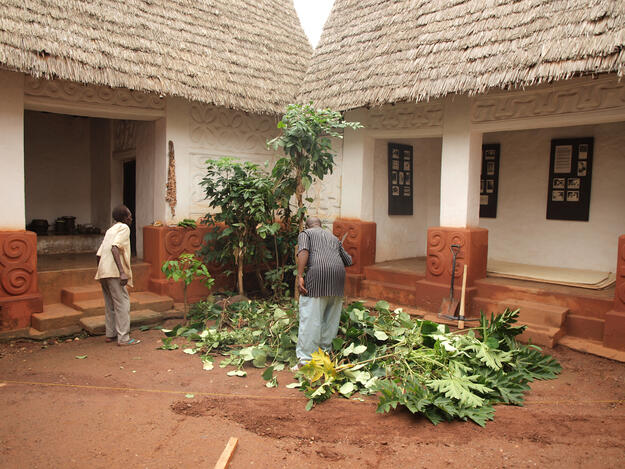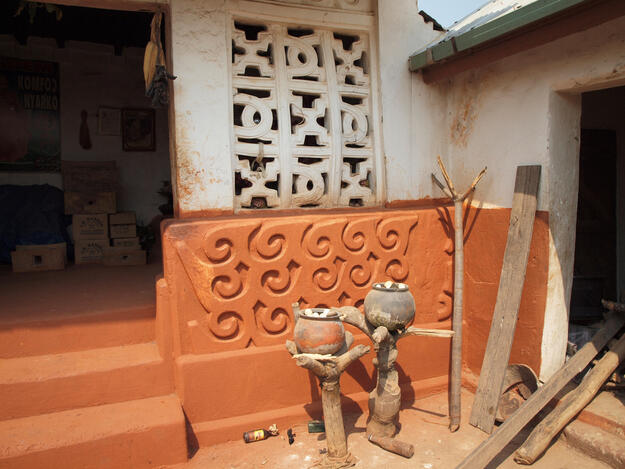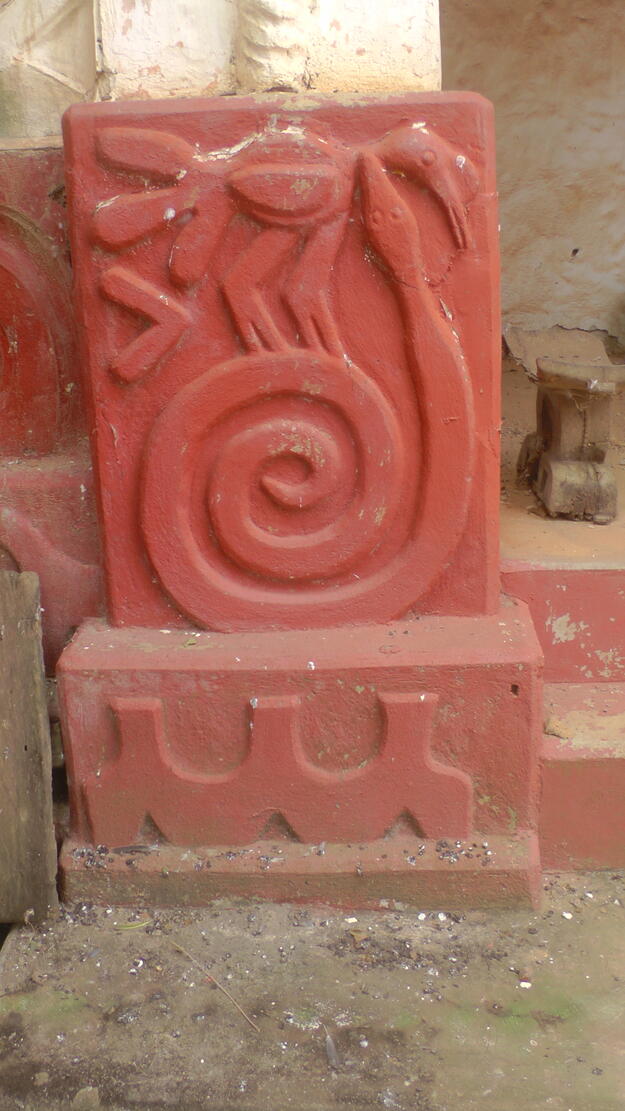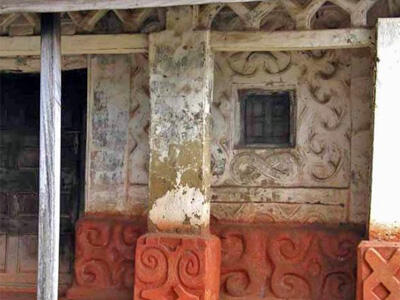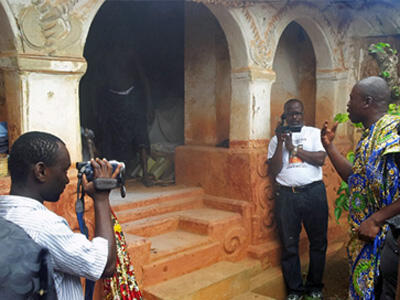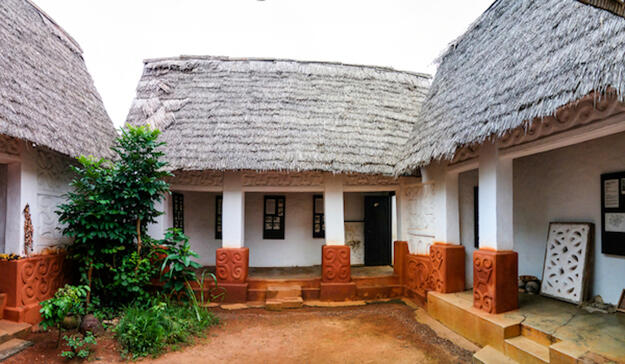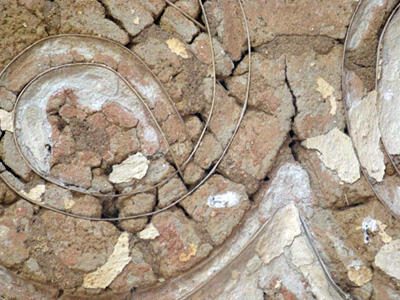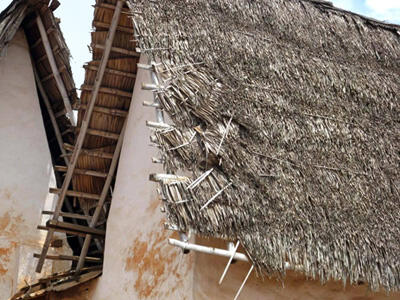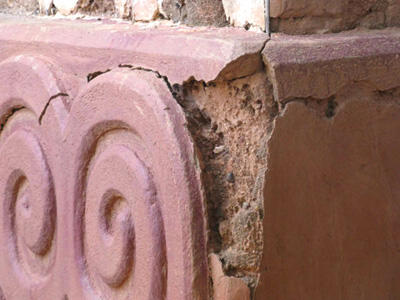Site History and Significance
Vestiges of the Kingdom of Asante
At its zenith in the eighteenth century, the Kingdom of Asante was one of the most powerful states on the African continent. Among the few remaining vestiges of this once flourishing empire are ten traditional shrines scattered in villages to the north and northeast of Kumasi in central Ghana. Places of religious and spiritual significance, the earthen buildings demonstrate the rich artistic and architectural traditions of the Asante culture. Decorative reliefs adorn the shrines with intricate, interlacing geometrical designs, including representations of animals and traditional “Adinkra” symbols carrying meanings associated with the values and beliefs of the Asante people.
The Loss of Craftsmanship and Local Stewardship
Historically, the earthen shrines were well preserved by master craftsmen in each village who carried out regular maintenance to contend with natural cycles of deterioration in the tropical climate. But, as government oversight of heritage gradually eclipsed local stewardship in the mid-twentieth century, techniques that had stood the test of time were replaced with more cost-effective approaches, resulting in the waning of craftsmanship and the introduction of modern materials like corrugated metal roofing and cement plaster. Despite the site’s inscription on the UNESCO World Heritage List, conservation problems have persisted, and the search for an effective solution for long-term upkeep and stewardship of the shrines is ongoing.
Our Involvement
2012 World Monuments Watch
World Monuments Fund (WMF) first engaged with the Asante Traditional Buildings through advocacy and awareness-building about their state of conservation following their inclusion on the 2012 World Monuments Watch. With support from the U.S. Embassy in Ghana and the U.S. Department of State through the Ambassadors Fund for Cultural Preservation, WMF undertook documentation and conditions assessment, returning in 2014 to perform emergency repairs. Working in collaboration with heritage authorities, WMF strived to build local capacity by engaging local stakeholders and training craftspeople in traditional skills, including at a Watch Day event at the Asawase Shrine near Kumasi that encouraged community participation in preservation activities.
2022 World Monuments Watch
Ten years later, the 2022 World Monuments Watch calls for a renewed dialogue about the site’s long-term sustainability. With the Asante Traditional Buildings again in danger, World Monuments Fund is working with heritage authorities and local civil society to reimagine how the site can be managed and financed to move beyond a preservation model reliant on responsive conservation interventions.
![]()
Google Arts & Culture
Asante Traditional Buildings are featured in a collection of immersive Google Arts & Culture exhibits entitled The Black Atlantic. To view the exhibits related to Asante Traditional Buildings, click here.
Learn More
Through the World Monuments Watch, WMF collaborates with local partners to design and implement targeted conservation programs—including advocacy, planning, education, and physical interventions in the historic built environment—to improve human well-being through cultural heritage preservation.
Sign up for our newsletter to receive regular updates on our projects, stories from the field, upcoming events, and more!
![]()
World Monuments Fund's work at the Asante Traditional Buildings has been made possible, in part, by support from the U.S. Ambassadors Fund for Cultural Preservation (AFCP), the U.S. Embassy Accra, and the Watch Committee of World Monuments Fund.

